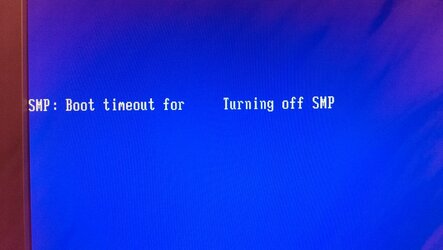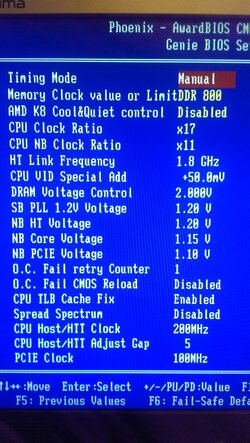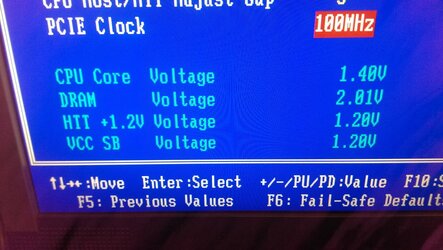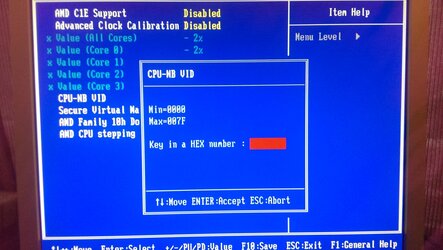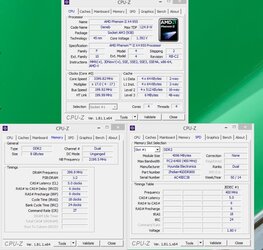- Joined
- Jan 5, 2016
Really hoping someone can answer a few questions that have me a bit stumped. I'm not overly knowledgeable but I kinda get the basics. This is a bit of an old system but it seems to run nice so I thought I would get my friend some extra RAM. He mainly uses it for games as long as the GPU can handle them. I've had to work on it over at his place but now I have the system with me for a while. Current specs are;
AMD Phenom II x4 955 CPU
DFI Lanparty 790 AM2+ Mobo (shouldn't the CPU above be running in an AM3+ motherboard??)
AMD HD 6850 1GB PCI-E
(? x ?) DDR2 800MHz
120GB SSD
3TB SATA
I originally picked up 4 x 2GB DDR2 800Mhz modules but had issues running all 4 at once. I thought maybe a bad 3rd slot and then maybe a bad chip but just ended up going to get him 2 x 4GB DDR2 800MHz chips. I didn't realise until too late that I had gone and got him high density RAM. It was cheap off eBay. Well needless to say that it was unbranded and if it did get past the BIOS then it would crash getting into Windows. I got another 2 x 4GB kit from eBay and the same thing happened. Thankfully I got my monies back. I then bought some Hynix 2 x 4GB modules and it was happy with that although I'm pretty sure that it's still high density. I think?!?! Currently running Memtest86 on it as I have the system here at home with me for a while.
The BIOS has a heap of advanced features and one of them is the option for ganged vs unganged mode. I've learnt the difference in that ganged runs the memory at 128bit and unganged runs at 64bit. One of my questions is - does high density RAM require it to be run at 128bit mode? The reason I ask is that at first, I couldn't get past post without it being in ganged mode. Now it seems to boot in both ganged and unganged mode. CPU-Z is showing the RAM to be running at command rate 2T which might help too. I upped the RAM voltage in the BIOS from 1.8v to 2.0v hoping that might help a bit? Would that help?
All seemed to be good until last night when Windows rebooted while I was in Tekken 7. With the previous 2 x 2GB RAM modules, the system NEVER had an issue and has only ever had rebooting problems since I tried to get 8GB running in it. The motherboard does have support for 8GB RAM because it says so in the manual. I've also read online that it runs 8GB fine with 2 or 4 slots populated. I guess what I'm trying to find out are the best settings to run this RAM. I'll put some pics up from CPU-Z. Or if I can locate an AM3+ board, should I bite the bullet and just plonk the stuff in there and grab some DDR3 1333Mhz? Monies are tight so getting it running with the best BIOS settings for now would be preferred. Upgrade would have to be next year some time.
Cheers to anyone who can lead me on to a happy resolution



AMD Phenom II x4 955 CPU
DFI Lanparty 790 AM2+ Mobo (shouldn't the CPU above be running in an AM3+ motherboard??)
AMD HD 6850 1GB PCI-E
(? x ?) DDR2 800MHz
120GB SSD
3TB SATA
I originally picked up 4 x 2GB DDR2 800Mhz modules but had issues running all 4 at once. I thought maybe a bad 3rd slot and then maybe a bad chip but just ended up going to get him 2 x 4GB DDR2 800MHz chips. I didn't realise until too late that I had gone and got him high density RAM. It was cheap off eBay. Well needless to say that it was unbranded and if it did get past the BIOS then it would crash getting into Windows. I got another 2 x 4GB kit from eBay and the same thing happened. Thankfully I got my monies back. I then bought some Hynix 2 x 4GB modules and it was happy with that although I'm pretty sure that it's still high density. I think?!?! Currently running Memtest86 on it as I have the system here at home with me for a while.
The BIOS has a heap of advanced features and one of them is the option for ganged vs unganged mode. I've learnt the difference in that ganged runs the memory at 128bit and unganged runs at 64bit. One of my questions is - does high density RAM require it to be run at 128bit mode? The reason I ask is that at first, I couldn't get past post without it being in ganged mode. Now it seems to boot in both ganged and unganged mode. CPU-Z is showing the RAM to be running at command rate 2T which might help too. I upped the RAM voltage in the BIOS from 1.8v to 2.0v hoping that might help a bit? Would that help?
All seemed to be good until last night when Windows rebooted while I was in Tekken 7. With the previous 2 x 2GB RAM modules, the system NEVER had an issue and has only ever had rebooting problems since I tried to get 8GB running in it. The motherboard does have support for 8GB RAM because it says so in the manual. I've also read online that it runs 8GB fine with 2 or 4 slots populated. I guess what I'm trying to find out are the best settings to run this RAM. I'll put some pics up from CPU-Z. Or if I can locate an AM3+ board, should I bite the bullet and just plonk the stuff in there and grab some DDR3 1333Mhz? Monies are tight so getting it running with the best BIOS settings for now would be preferred. Upgrade would have to be next year some time.
Cheers to anyone who can lead me on to a happy resolution
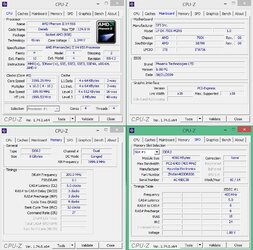
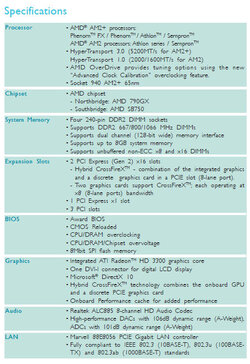

Last edited:
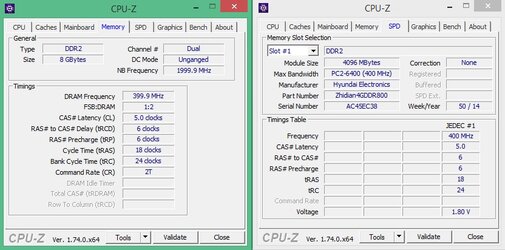
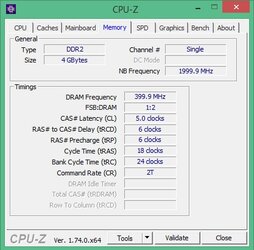
 And why can't I get Memtest86 to load lol...there's no reason it can't pick up the SPD or JEDEC information like the BIOS and CPU-Z. I saw a post where someone had to rewrite some of the Memtest86 code to get it to load while ignoring some parameters. Bugger that! If Memtest86 has issues reading RAM then there is something lacking. I feel like such a complainer right now
And why can't I get Memtest86 to load lol...there's no reason it can't pick up the SPD or JEDEC information like the BIOS and CPU-Z. I saw a post where someone had to rewrite some of the Memtest86 code to get it to load while ignoring some parameters. Bugger that! If Memtest86 has issues reading RAM then there is something lacking. I feel like such a complainer right now 